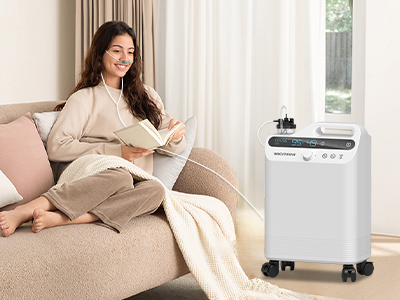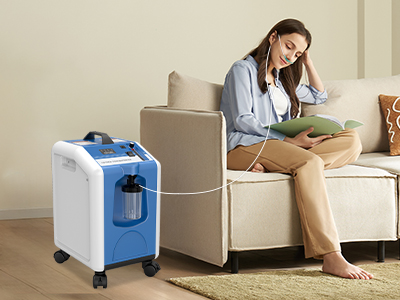10 Jan 2025
The biting cold of January ushers in a host of challenges, especially for those relying on oxygen therapy to manage chronic respiratory conditions. By understanding the unique demands of January, individuals can ensure both comfort and safety during these colder months.

Winter Weather and Its Impact on Oxygen Therapy
January’s cold air can be unforgiving, particularly for those with respiratory ailments. The drop in temperatures often leads to constricted airways, making it harder for oxygen therapy users to breathe comfortably. Furthermore, the winter months see a surge in respiratory infections, such as the flu or pneumonia, which can complicate pre-existing conditions. This makes consistent oxygen therapy and protective measures more important than ever.
Staying Warm While Using Oxygen Therapy
Maintaining warmth is crucial during the frigid January days, but it must be done with care. Insulating oxygen equipment without blocking airflow is essential. Wrapping tubing in thermal covers can prevent it from becoming brittle in freezing temperatures. Layered, breathable clothing is ideal for users, ensuring both warmth and unhindered oxygen therapy. For outdoor ventures, avoiding extreme exposure to cold weather helps prevent respiratory stress.
Managing Dry Air and Humidity Levels
Winter air, stripped of its moisture, can cause nasal passages to dry out, leading to discomfort for oxygen therapy users. Humidifiers can play a pivotal role by adding moisture to the air, which prevents dryness and soothes irritated nasal tissues. Additionally, saline sprays can offer immediate relief from dryness caused by prolonged oxygen use. Care should be taken, however, to avoid excessive humidity, which can encourage mold growth in the home.
Traveling with Oxygen Therapy in January
January often involves travel, whether for work, leisure, or family commitments. Portable oxygen concentrators provide flexibility but require thorough preparation. Planning for potential delays, packing extra batteries, and carrying a detailed medical plan can mitigate risks during winter journeys. Additionally, winter storms can lead to power outages, making it essential to have backup oxygen solutions or access to nearby facilities.

Safety Precautions for Winter Oxygen Therapy
Winter brings its own set of safety concerns for oxygen therapy users. Condensation in tubing is a common issue, especially when moving between cold outdoor temperatures and warm indoor spaces. Regularly checking tubing for moisture and ensuring proper storage prevents blockages and freezing. Furthermore, the combination of oxygen equipment and heaters demands heightened fire safety. Keeping oxygen tanks or concentrators away from open flames and heating elements is non-negotiable.
Mental Health Considerations During Winter Oxygen Therapy
The darker, colder days of January can take a toll on mental well-being, especially for those confined indoors due to health concerns. Seasonal affective disorder (SAD) is a common issue during this time, marked by fatigue and low mood. Engaging in light therapy, staying socially connected through virtual means, and maintaining routines can help counteract these effects. Oxygen therapy users should also prioritize activities that bring joy and relaxation to their daily lives.
Preparing for Emergencies
Winter emergencies, such as snowstorms or prolonged power outages, require proactive planning for oxygen therapy users. A well-stocked emergency kit should include extra batteries, portable oxygen supplies, and backup power sources. It is also prudent to inform neighbors or local emergency services about one’s oxygen therapy needs, ensuring assistance is available during a crisis. Staying informed about weather conditions helps users anticipate and prepare for potential disruptions.
Benefits of Oxygen Therapy During the Winter Months
Despite the challenges of January, oxygen therapy offers invaluable benefits, enabling individuals with chronic conditions to maintain respiratory function. By delivering consistent oxygen levels, therapy minimizes the strain on the lungs and heart, even in harsh weather conditions. For many, this translates into greater energy, improved sleep, and enhanced quality of life throughout the winter season.
Conclusion
January’s icy grip need not hinder the effectiveness of oxygen therapy. With proper preparation, safety measures, and a proactive approach, individuals can navigate the winter months with confidence and ease. By embracing these strategies, oxygen therapy users can stay healthy and comfortable while enjoying the beauty of the winter season. Winter may be challenging, but it also offers opportunities to fortify one’s health and resilience.
Keywords: oxygen therapy
Originally published 10 Jan 2025, updated 10 Jan 2025.